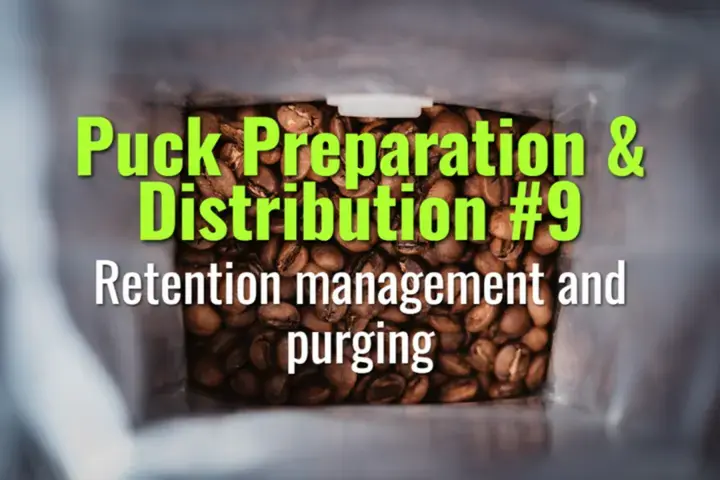Retention management and purging
How to manage grinder retention and purging practices to ensure dose accuracy, flavor consistency, and minimal waste.
- Coffee Basics Nerds
- 1 min read
Article 9 of 12 in Puck Preparation & Distribution/

What is Retention?
- Definition: Coffee grounds that remain trapped inside a grinder after grinding.
- Types:
- Exchange Retention: Old grounds mixed with new dose.
- True Retention: Grounds stuck inside grinder, only exiting after purge.
- Impact: Retained grounds can stale quickly and contaminate flavor in subsequent shots.
Retention Management Strategies
- Single Dosing:
- Weigh beans before grinding, grind all at once.
- Minimizes retention but requires efficient grinder design.
- Purging:
- Run grinder briefly after adjustment or idle period to clear old grounds.
- Typical purge: 1–3 g depending on grinder.
- Low-Retention Grinders:
- Modern designs (short chutes, vertical burrs) reduce retention.
- Workflow Adjustments:
- Keep grind chamber clean with brushes or bellows.
- Establish purge protocols for opening shifts, grind adjustments, and after grinder sits idle.
Purging Guidelines
- When Changing Grind Size: Purge 2–3 g to ensure new setting consistency.
- At Start of Shift: Purge retained grounds from overnight.
- After Idle Time (>5–10 min): Purge to avoid using stale grounds.
Benefits of Good Retention Management
- Accurate dosing and beverage yield.
- Cleaner flavor without contamination from stale fines.
- More predictable dialing-in process.
Summary
Retention and purging management is essential for consistency in espresso. By adopting single dosing, using low-retention grinders, and following purge protocols, baristas can ensure accurate dosing, fresh flavor, and reproducible shots.